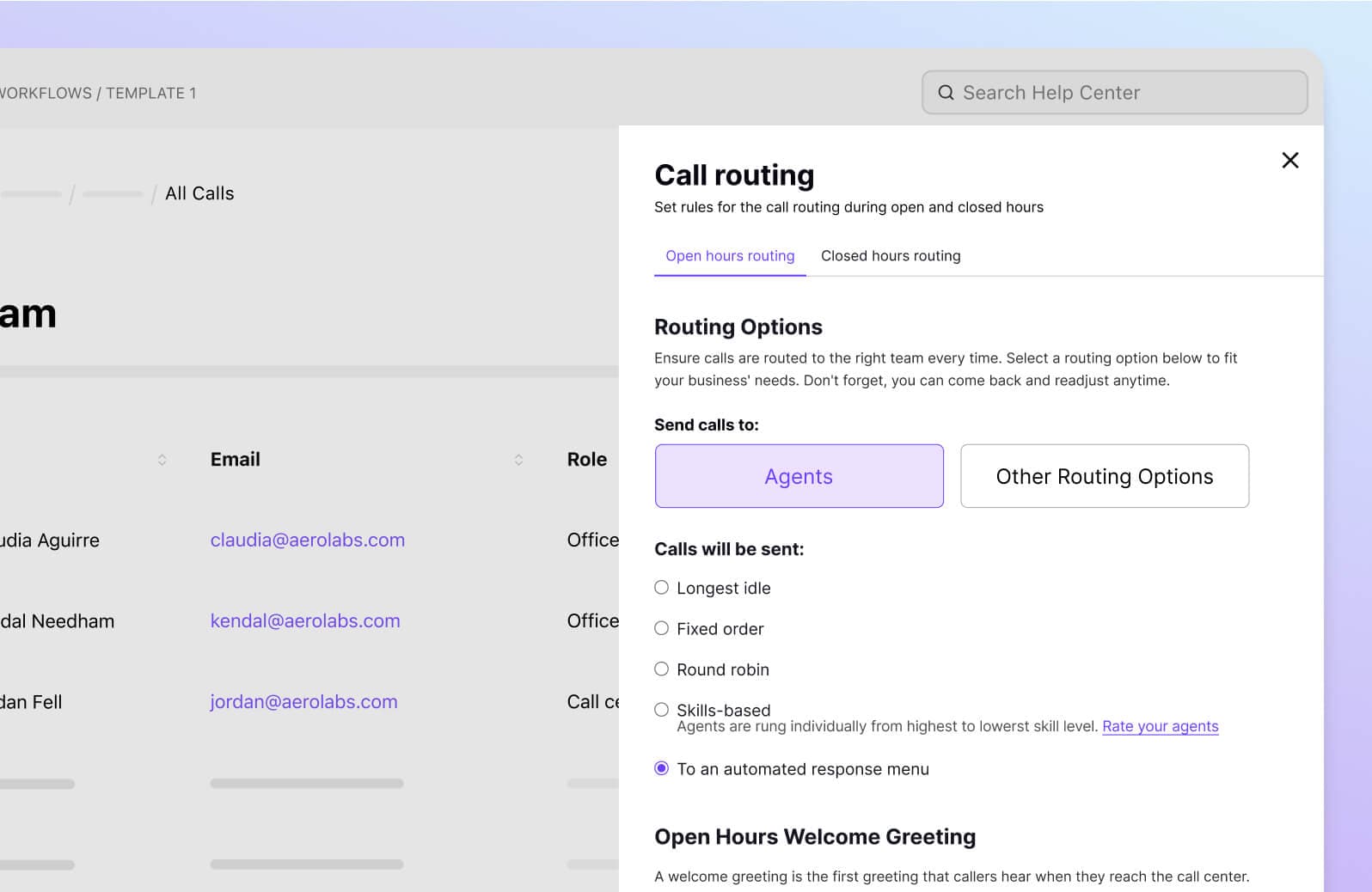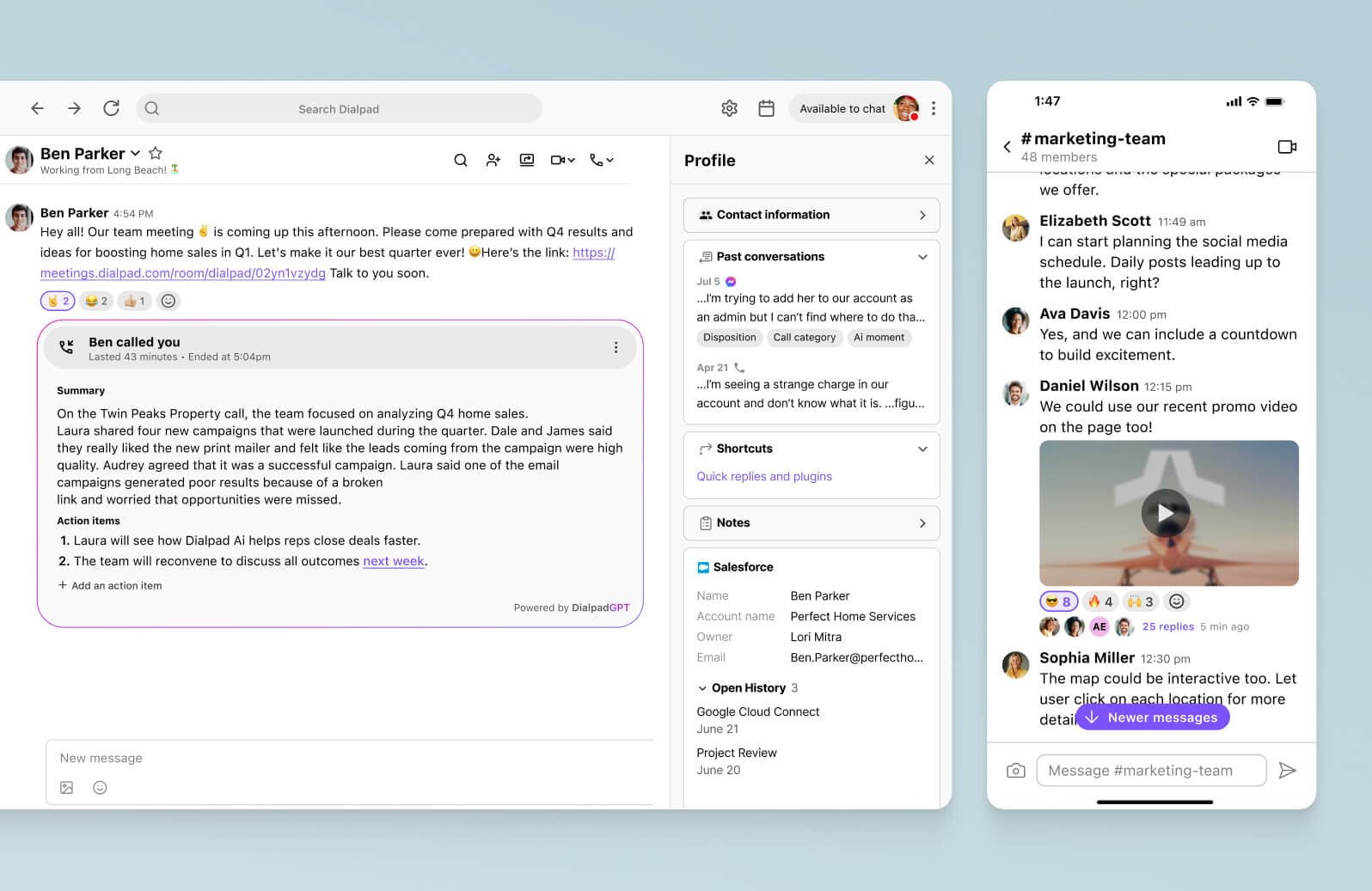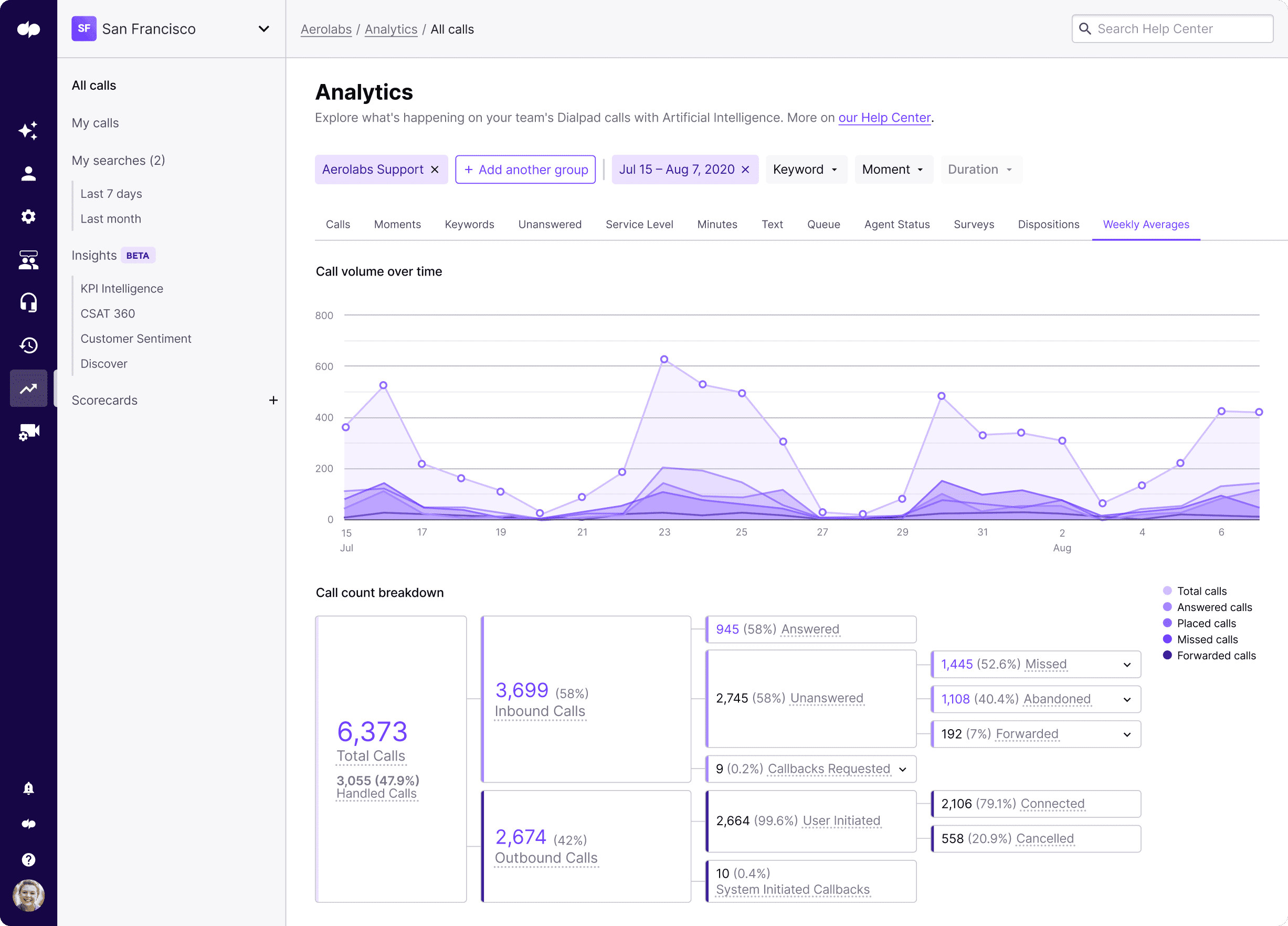IT strategy: A step-by-step guide featuring TED, Quora, Xero, and more

Director of Content

Tags
Share
It’s hard to think of any area of business that doesn’t benefit from an IT team’s work in some way. And the truth is, IT organizations are essential to running a smooth business.
A good IT strategy not only makes sure your everyday email and phone systems work properly, but also helps you plan for staffing and future growth—say, if you want to spin up new offices and hire employees in other countries.
But creating an IT strategy can be complicated. Only 16% of respondents in a McKinsey survey say their digital transformations have successfully improved performance. In this blog post, we’ll look at how six IT teams in different companies and industries did it, as blueprints that can inform your IT strategy as you build out the many different elements within it.
What is an IT strategy?
Essentially, an IT strategy is a detailed plan for maximizing your business value through information technology. It’s an important roadmap that defines your long-term goals and outlines how you’ll create sustainable value by ensuring maximum return on your IT operations and investments.
The strategy should include specific steps, deliverables, and a timeline. It should show how your IT team will support business objectives with tech solutions, and provide a template for how the IT department operates (sometimes referred to as IT governance).
Before IT strategy became a thing, technology was typically lumped in with overall business strategy. Today, that dynamic has shifted a bit, and IT capabilities tend to live under its own department, while being fully aligned with overall business needs.
What’s important to note is that an information technology strategy is not only for the IT department. Yes, they’re the ones executing it, but the strategy document should be readable and accessible to other teams, since IT directly impacts day-to-day operations in all departments.
What's keeping CIOs up at night?
Find out in the CIO Playbook, featuring interviews with 12 CIOs across a range of different industries.
Consider these factors throughout your strategic planning process
Your business model and objectives
You probably have a list of business goals, so use that as your guideposts when you’re projecting progress and anticipating roadblocks. Are you maximizing resources and personnel? Do you need better technology to provide a better customer experience? How will changing technology trends impact your plan in six months? A year?
Capabilities of your current IT team
Do you have the right people on board to create a robust strategy and see it through? Your staff might be experts at understanding the inner workings of computers, but they also need to interface with business leaders and other stakeholders to get buy-in and execute the plan.
Metrics and key performance indicators (KPIs)
Just as with any other business project, you need to determine benchmarks for your strategy’s success. (For example, you might evaluate whether initiatives are being delivered on time, or need to measure the average handling time of calls to the support team in real time.)
Initiatives—both short and long-term
IT strategies use an iterative process, with sections of the project completed in stages and evaluated after each step to see what worked and what didn’t. You should be setting both short-term and long-term initiatives as part of the overall strategy.
Mobility of solutions
A future-proof IT strategy should not only take the latest trends into account (like the work-from-anywhere evolution), but also consider potential future changes. One of the biggest ongoing impacts right now is of course, remote and hybrid work, and making sure your employees are able to have that flexibility and mobility is—or will be—a key project for many IT teams.
Security and procedures for managing risk
Your IT strategy should be a blueprint for success, but it’s important to plan for disaster too. Risk assessment and planning will help you mitigate against such occurrences, but will also show you what to do if the worst happens.
Green IT
This is not a must-have for every IT strategy, but if it aligns with your company values and your goals for the future, it’s an important consideration. Technology can be very demanding on energy and resources, especially for large organizations, and a sustainable IT strategy may help you to not only save money, but also build a better future.
6 IT strategy examples from real IT teams
1. Putting together a futureproof tech stack: Xero
With over 1,400 employees in 17 offices around the world,Xero needed a future-friendly IT strategy that was flexible and ready to handle rapid scaling—while connecting its teams and enabling them to work from anywhere, on any device.
And not only did they need to support internal communications between their own teams, they also had a customer care team and sales team that had to talk to prospects and provide support on a daily basis. It was a significant challenge for even a seasoned IT leader.
So, they used a born-in-the-cloud communications platform that allowed their team to make phone calls, have video conferences, and even send instant and SMS messages—all from the same app:

“We now have one global business communications platform for all offices,” says Andrew Jessett, Xero’s General IT Manager.
Not only that, they also made sure that it had a wide range of integrations to sync up the tools they’re using now and the tools they might want to use in the future, like Google Workspace and Salesforce.
“By pulling relevant data directly into our phone system, our reps can sell and service smarter—no matter where work takes them,” says Andrew.
2. Establishing a work-from-anywhere plan: Quora
With over 200 anywhere-workers, Ashley Sprague, Quora’s Head of IT, had one mission: To create a “pure cloud” IT stack that was designed for a work-from-anywhere environment. ““We needed a business communications platform that fit seamlessly alongside our core stack of cloud tools,” says Ashley.
Having that cloud stack is essential to enabling a remote or hybrid work environment. And one of the biggest tasks for most companies that are making this shift tends to be updating their phone system. Quora was using an on-premises PBX phone system that was hard to scale and inflexible.
“It doesn’t matter if I’m in the office,” says Harry Tran, a Client Technology Engineer at Quora. I can be anywhere connected to Dialpad, and I can administer accounts no problem… When I went to Japan recently, I was able to take phone calls as if I was in-office.”
If you or your employees want to be able to work from anywhere, then that should be a key piece of your IT strategy. From there, you can narrow down your search and find intuitive and scalable tools. For Quora, they went with Dialpad, which allowed them to communicate on a variety of different channels—and made things easy for their IT team. “It took 24 hours to get our team up and running on Dialpad,” says Ashley.
3. Having a lean IT team approach: TED
Yes, lean teams help you save money, but often, businesses have lean IT teams not out of choice, but because of a constraint in resources or budget.
As a best practice, an IT strategy should aim to be as efficient as it can to not only achieve better returns for lower costs, but also maintain simplicity for processes and tools.
From using automations to streamlining the number of tools being used, there’s a range of different ways to maintain a lean IT team and approach.
“When I’m making technology decisions for TED, I’m always ensuring that the solution I pick is self-sufficient, easy to service, and low maintenance,” says Francil Richards, TED’s Senior IT Manager.
Choosing the right tools—specifically, versatile and robust tools that are designed to be easy to administer and do multiple things well, can go a long way here. It might look like using a unified communications platform instead of having one tool for video conferencing and another for messaging.
Or, it might look like choosing a platform that makes it easy to set up new hires with accounts or phone numbers. This was also something that was top of mind at TED. “Dialpad makes it easy to provision a new user in three clicks,” said Francil.

4. Supporting the customer experience: Outdoor Voices
An IT team can also have a significant positive impact on the customer experience, loyalty, and retention.
What contact center tools can best support your remote agents and supervisors? What security and compliance features should you look out for? What kind of data retention policy will you need? There are all things that an IT strategy can inform or influence.
Activewear brand Outdoor Voices needed to provide better support experiences for customers, with more customization. Dialpad helped them to replace the separate systems used by HQ, retail offices, and customer service—and the multiple tools that were hampering the IT team. They were able to set custom rules for call routing, and use one reliable phone system across all devices.

5. Building a secure and disaster-proof plan: The Second City
With alumni like Tina Fey and Stephen Colbert, The Second City is a comedy enterprise with over 500 employees and six locations. (Learn more about enterprise phone systems.)
And they'd always had an on-premises phone system—until a devastating fire at their HQ in downtown Chicago destroyed both their data center and on-premises PBX.
After that, they knew they needed a new disaster-proof IT strategy that could "re-engineer to prepare themselves for the next 50 years," in the words of Dan Wagner, their IT Manager.
Now, they're using a communications platform that empowers the team and touring company to be mobile across its different locations:

"We don't have to worry about a server that's out of date, or updates to a new piece of software, or licensing," says Dan. "It cuts down on management time, resource time, and saves money."
6. Empowering internal cross-team collaboration: Austin FC
As a soccer (or football, if you’re from Europe) club, Austin FC has multiple departments that work together to make every season a success.
There’s the stadium staff, who make sure that everything goes smoothly on game days. There’s the ticket sales team, which handles transactions over the phone when fans want to buy tickets, and more.
A good IT team should be able to empower all these different departments to communicate with each other in real time. (Imagine coordinating all of this… During the playoff season.)
“For, for me, my job the biggest stressors are mainly connectivity,” says Ryan Fannin, Vice President of Information Technologies at Austin FC. “Making sure everything works, everybody's connected, and everything's smooth for our staff and our fans.”
Because communications was so important, Ryan knew that one of the stars of his IT strategy needed to be the phone system. Not only was it essential for facilitating over-the-phone ticket sales, it was also the source of crucial data that could help them improve the customer experience (and of course, sales).
So, they chose a cloud phone system that was easy to set up, worked across computers and cell phones, integrated with their Salesforce and Microsoft 365 tools, and also gave them the analytics they needed.

“Now, we’re able to look and see who’s making all the calls, how long they go on, and the specific data points that are important for our sales leadership group,” says Ryan.
How to build an IT strategic plan
Determine the business goals that the IT strategy should accomplish
Maybe you’re aiming to improve IT help desk response times or enhance the digital experience for customers. Your business objectives don’t have to be IT-specific for them to be a part of your IT strategy—you might want to expand into a new region, reduce operating costs, or develop new product lines. In most cases, IT can, and should, be a huge help.
Conduct a gap analysis between the current state and the target state so you can see how far you have to go. It’s best to separate objectives into smaller, bite-sized IT initiatives so that there’s some wiggle room for adjusting the strategy. (See how Fenway Health ‘s IT team did it.)
Gather the right people—an IT strategy is a cross-departmental affair
That’s right, IT strategy development is a party to which everyone’s invited. While the actual strategy will be the responsibility of the CIO’s (Chief Information Officer) office, the team has to include different stakeholders so that it can reflect the input and interests of every department.
It’s important that business and IT leadership (who tend to have varying visions) are on the same page—and the recommendations must be bought into by both sides.
Have a realistic budget that accounts for future needs
Define how much you can afford to spend on IT infrastructure and management, including site costs, software, hardware, maintenance, licenses, and personnel. If you don’t want to constantly shell out for new technology, make sure you choose solutions that are flexible and scalable. This will help you get the most out of your IT dollars instead of paying for upgrades every year.
This is where it can pay off to look into cloud service providers. If you can shift part or most of your operations to the cloud, that can result in significant cost savings because you’re not paying for hardware, maintenance, or office space.
We mentioned Fenway Health above, but this is exactly what they did—instead of having to pay for expensive Boston real estate, they used a cloud contact center platform to allow their agents to work remotely. Their agents and supervisors could handle calls from patients, monitor their metrics, and more—all online:

Assess your existing IT assets and infrastructure
Now it’s time to evaluate your enterprise architecture and see what weapons are in your arsenal. Does your current technology provide a competitive advantage? Are there any existing assets that can be incorporated into the strategy, or will they need replacing?
Think about the capability and cost of your computing and telecommunications infrastructure (including IT staff). You might consider replacing legacy phone systems with VoIP, but would it be best to operate on-premises, in the cloud, or via a hybrid model?
Ask for input from the people who’ll be delivering the strategy—what steps do they take when carrying out a task, and how could each be improved? Identify ways to boost the efficiency of IT systems and business processes, the way people work, and how they are managed.
An IT assessment will help you identify and prioritize technology initiatives, each of which should have a direct impact on the strategic objectives and a measurable outcome. It’s also worth looking at tech trends in your industry and in general, and at what your competitors are doing.
Define your ideal IT environment and goals
The IT strategy is your chance to share a vision of how you want the company to look. Sure, it has to be grounded in reality, but you can still define your ideal environment and aim toward it. This part of the plan should recognize current strengths and describe how you’ll build on them, as well as addressing IT needs.
Again, you’ll need input from the people responsible for implementing your vision. Ask team members what their ideal environment would look like—what tools will they require? How will you optimize communication and workforce management?
Remember our green IT pointers from earlier? Think about how you could use emerging technology to make processes more sustainable—such as going paperless, holding video meetings instead of traveling, and using energy-efficient equipment. Partners and stakeholders need to be on board with this, too.
Now that you’ve evaluated all aspects of the business, you can consolidate your goals. Short-term initiatives give you the opportunity to make smaller changes, then pause and adapt the plan going forward. Long-term initiatives are usually defined as those that will take three to five years to implement.
Define security and governance standards
No matter what type of business you run, it’s essential that your IT strategy shows how you’ll protect data and privacy (your own and that of your customers). The amount of security required will depend on regulations for your particular industry as well as national, state, or local compliance standards.
At the very least, you should have standard firewall and antivirus/anti-malware protection. Some firms will want to incorporate further measures such as disaster recovery protocol, multi-factor authentication, or intrusion detection systems.
As well as defining how you’ll guard against human error, theft of equipment, and hackers, the strategy document must include contingency plans for a cybersecurity breach—what will you do if the worst happens?
Choosing the most secure technology (with encryption and redundant data centers, for instance) will help you mitigate disaster.
Does your IT strategy reflect and support your business goals?
If it doesn’t, it’s time for a new strategy.
In a competitive business world that's becoming more distributed every day, an effective IT strategy is essential for helping you choose the right software and tools, establish a plan for scaling internationally, and empowering your team to provide a better customer experience.
Need a remote-friendly communications platform that supports your IT strategy?
Book a demo of Dialpad to see how easy it is to administer and set up for even lean IT teams. Or, take a self-guided interactive tour of the app on your own first!








